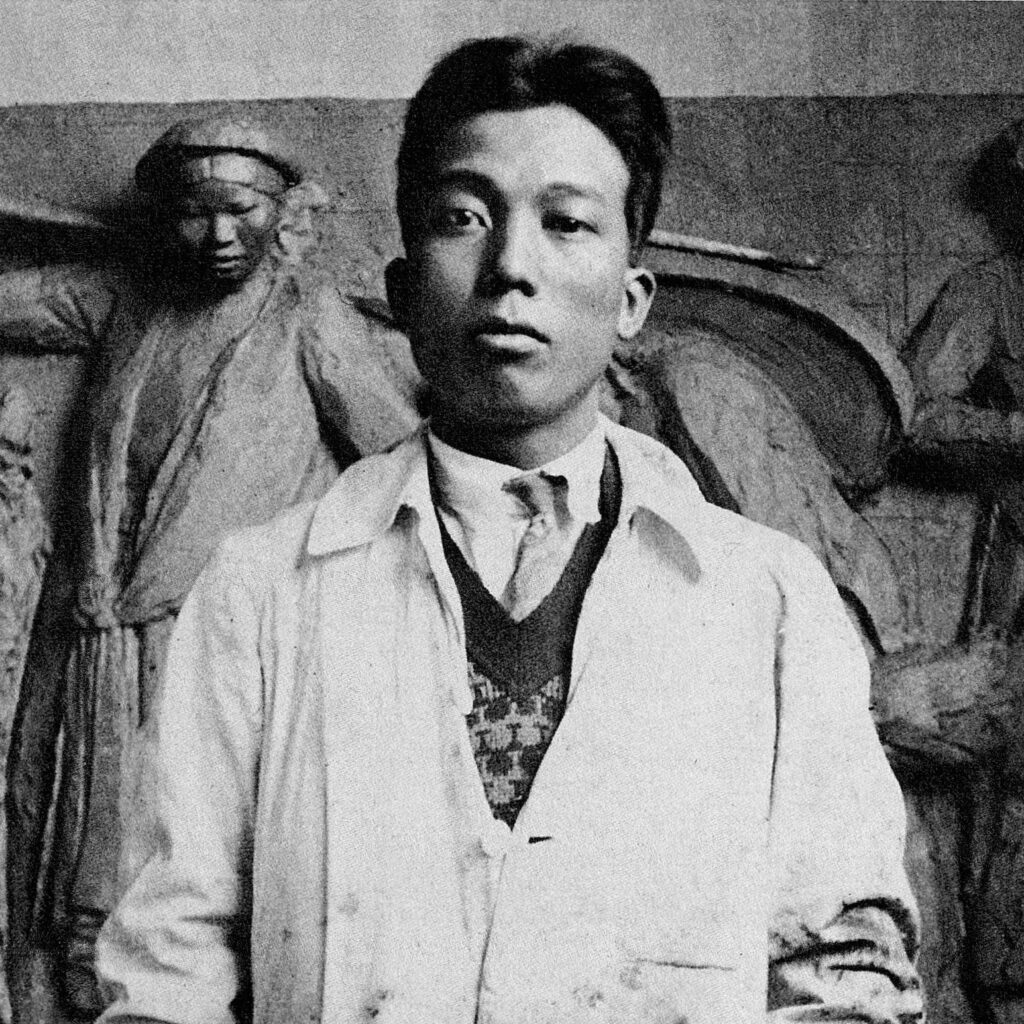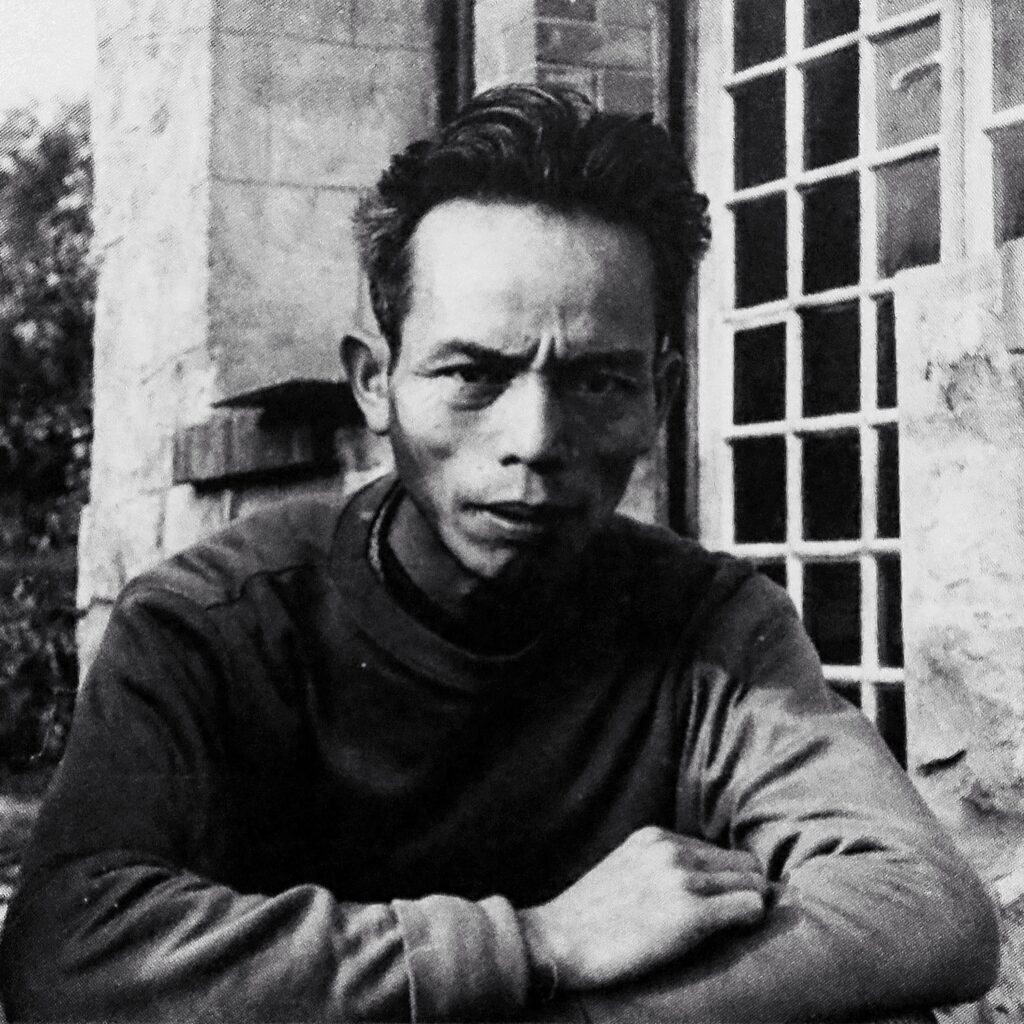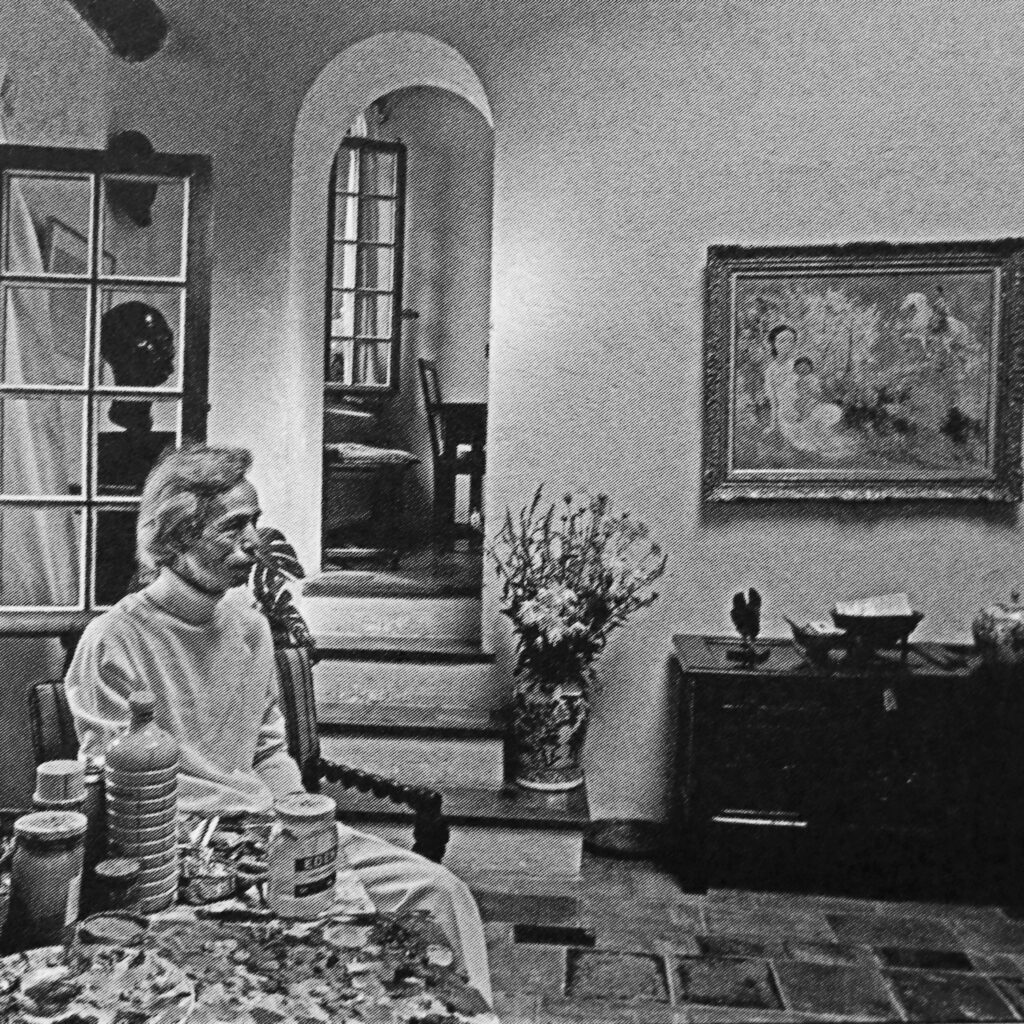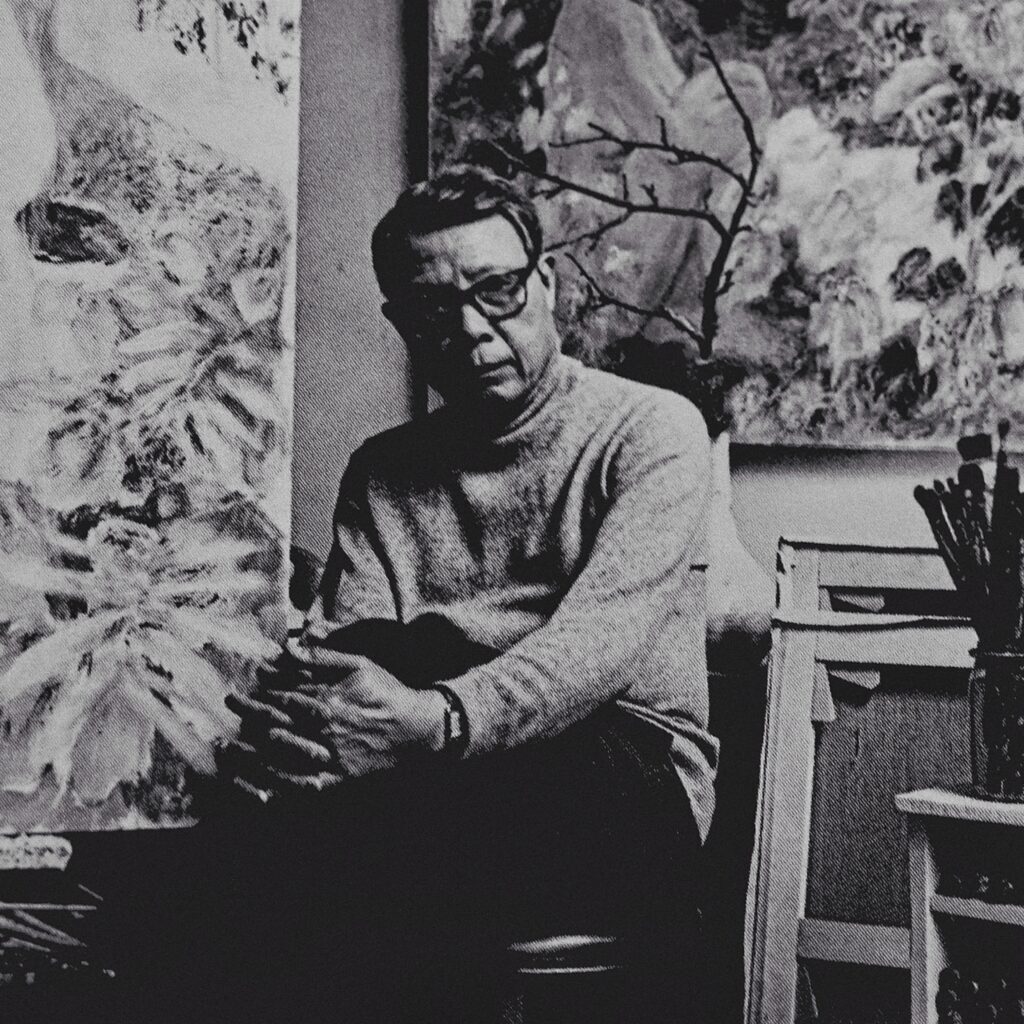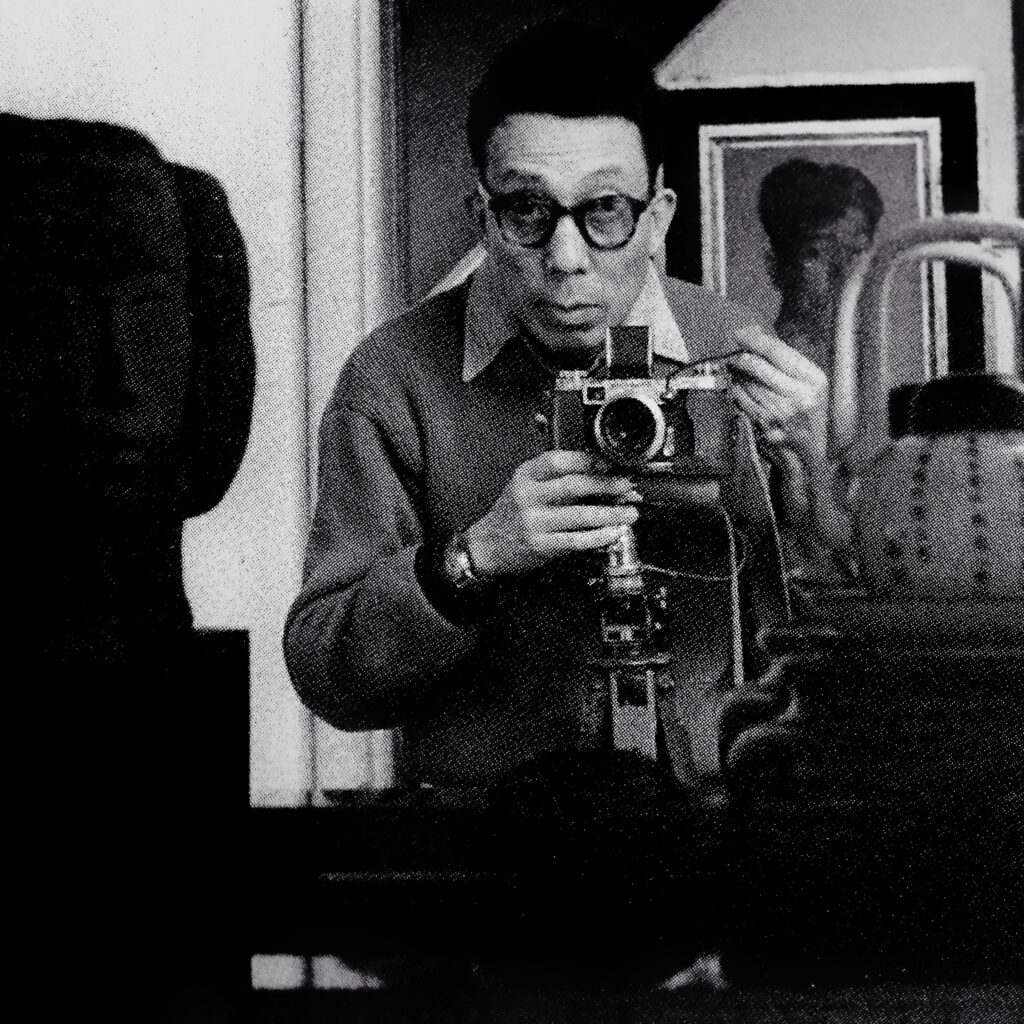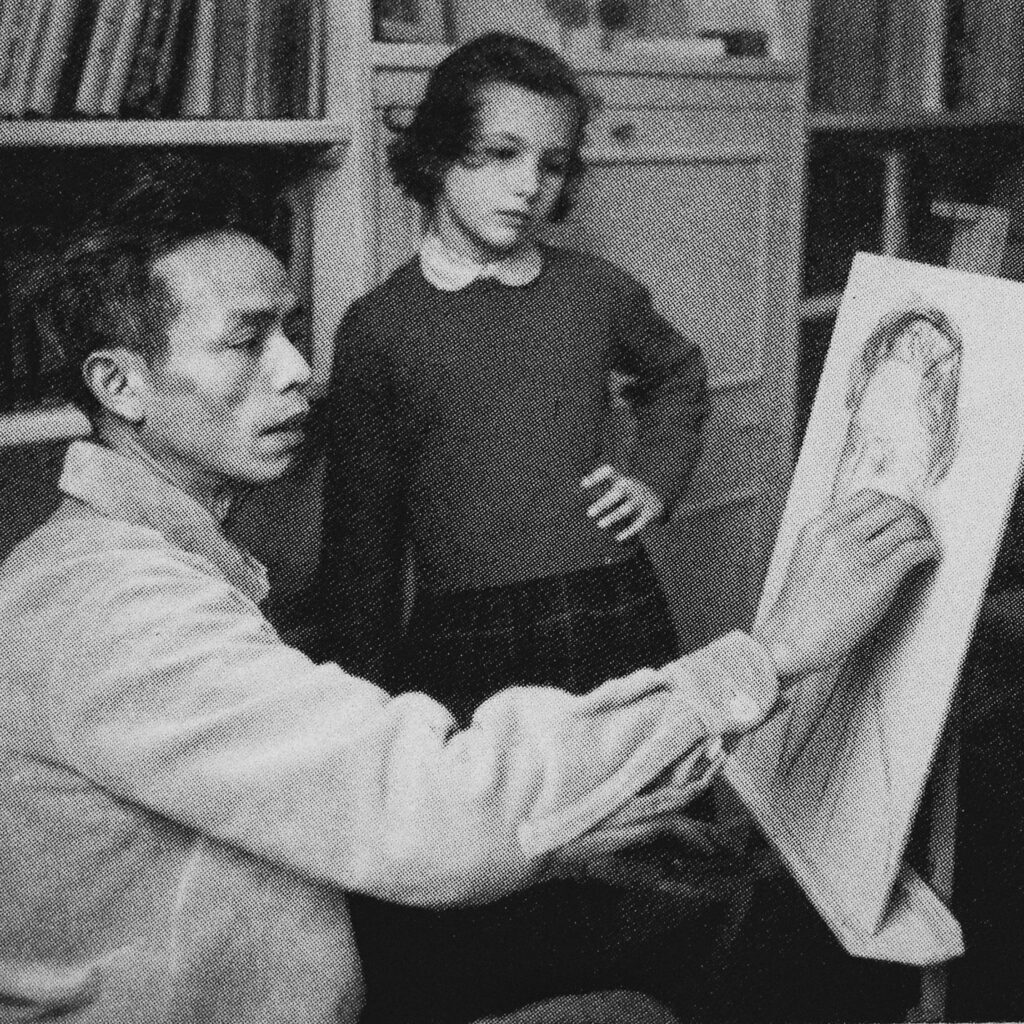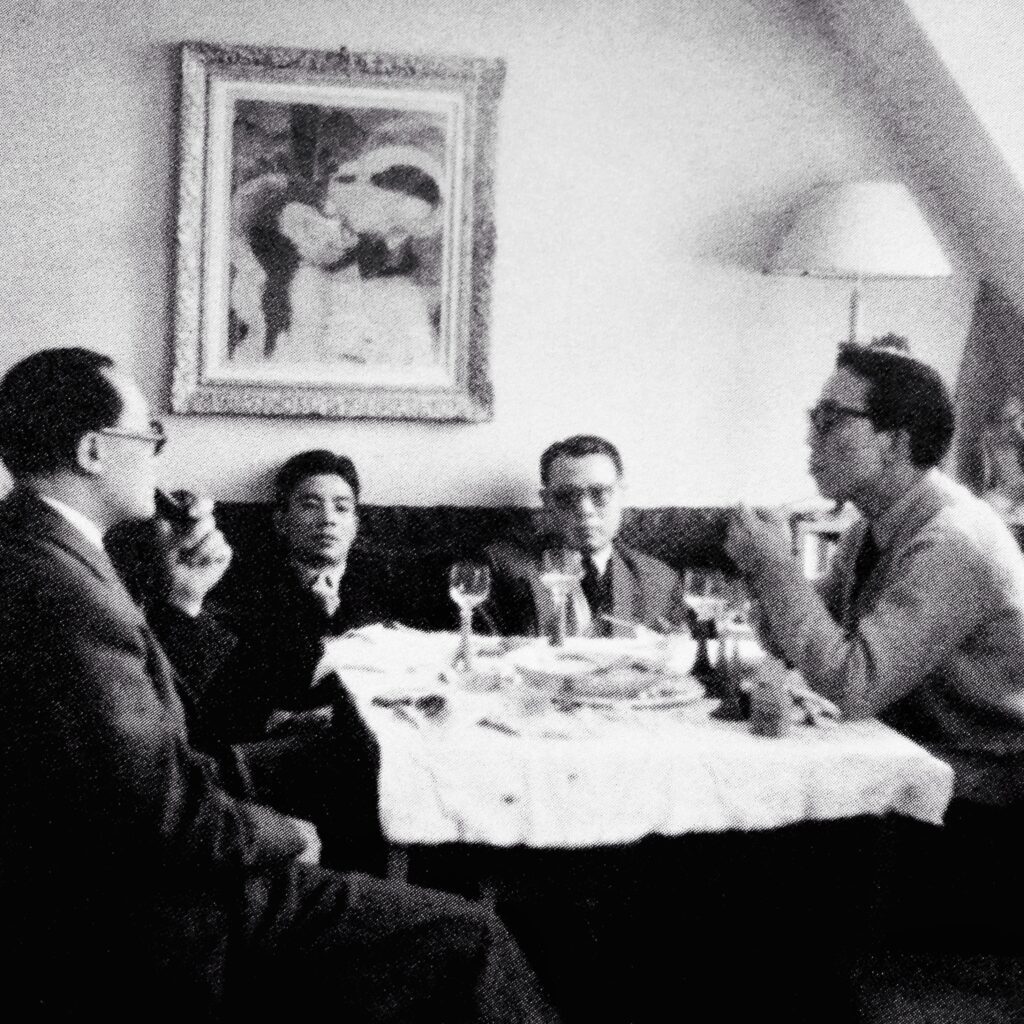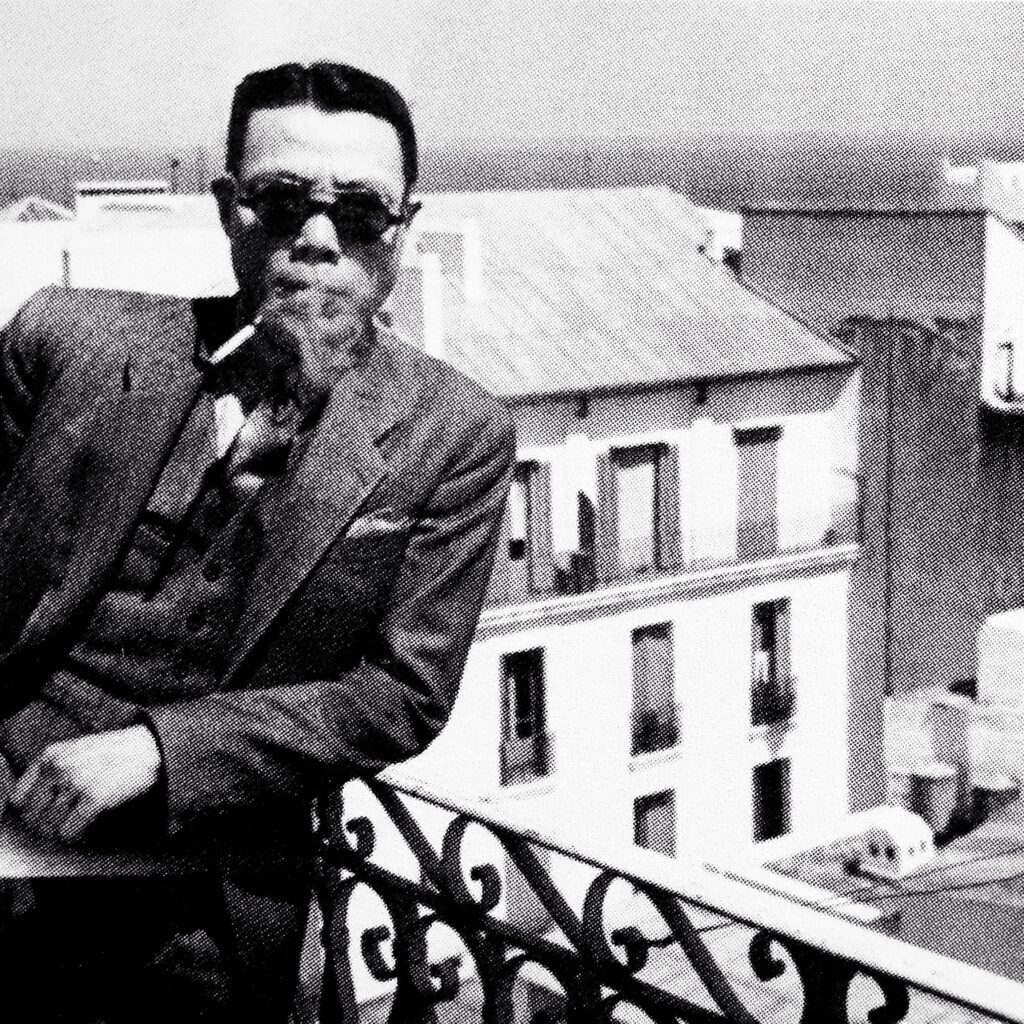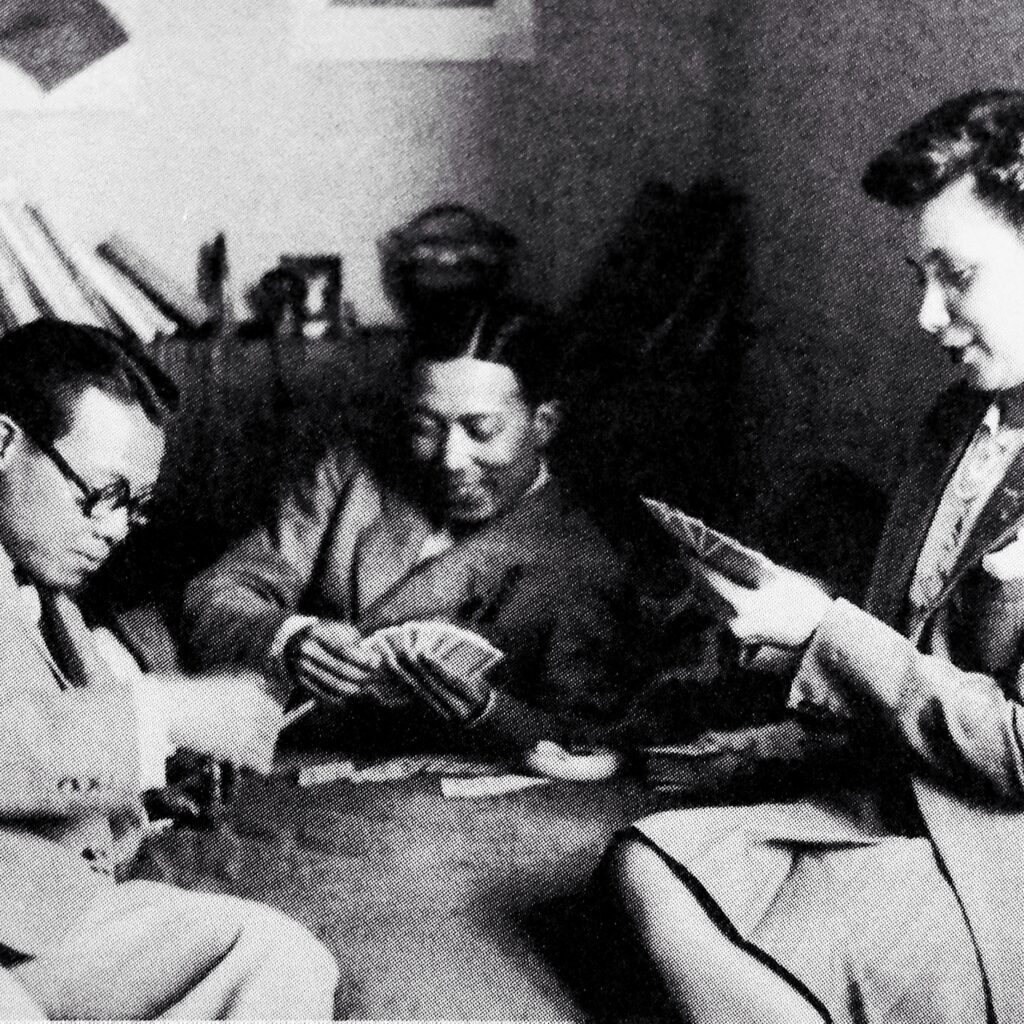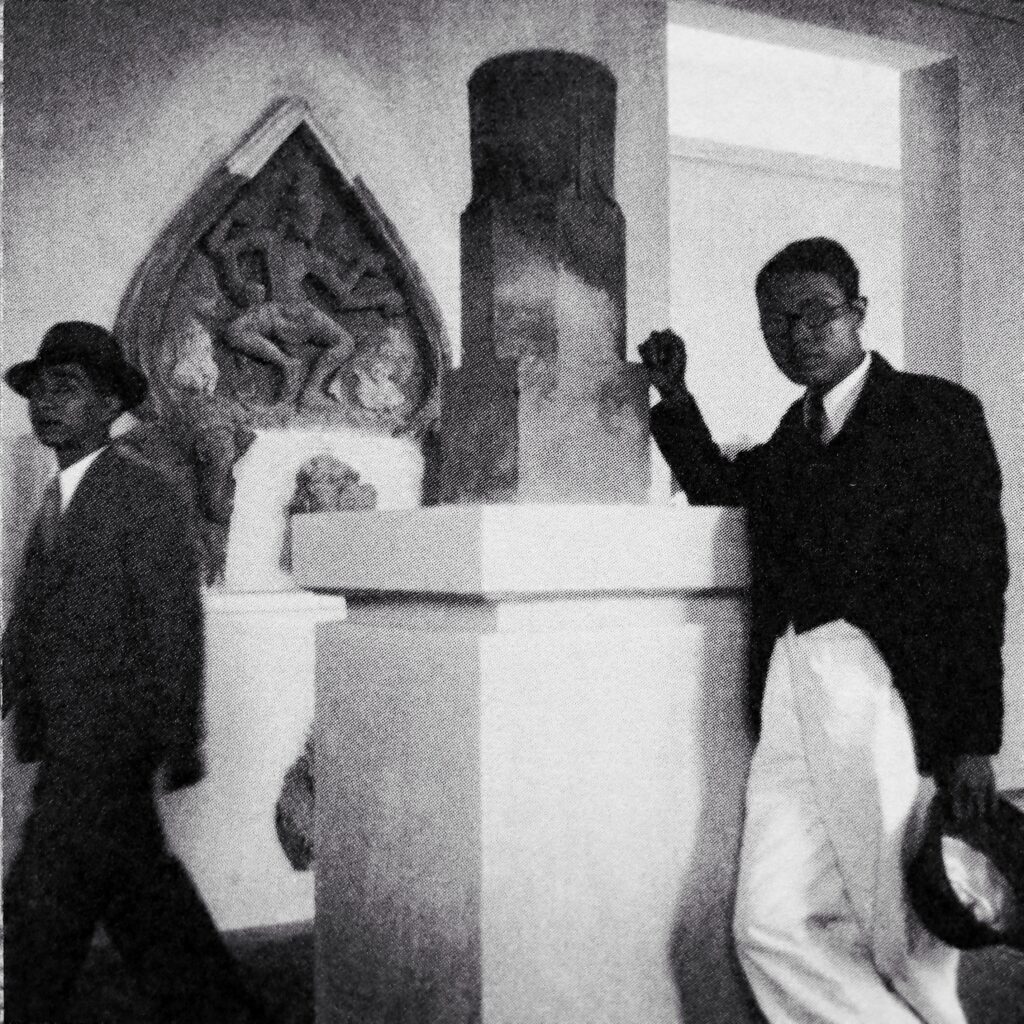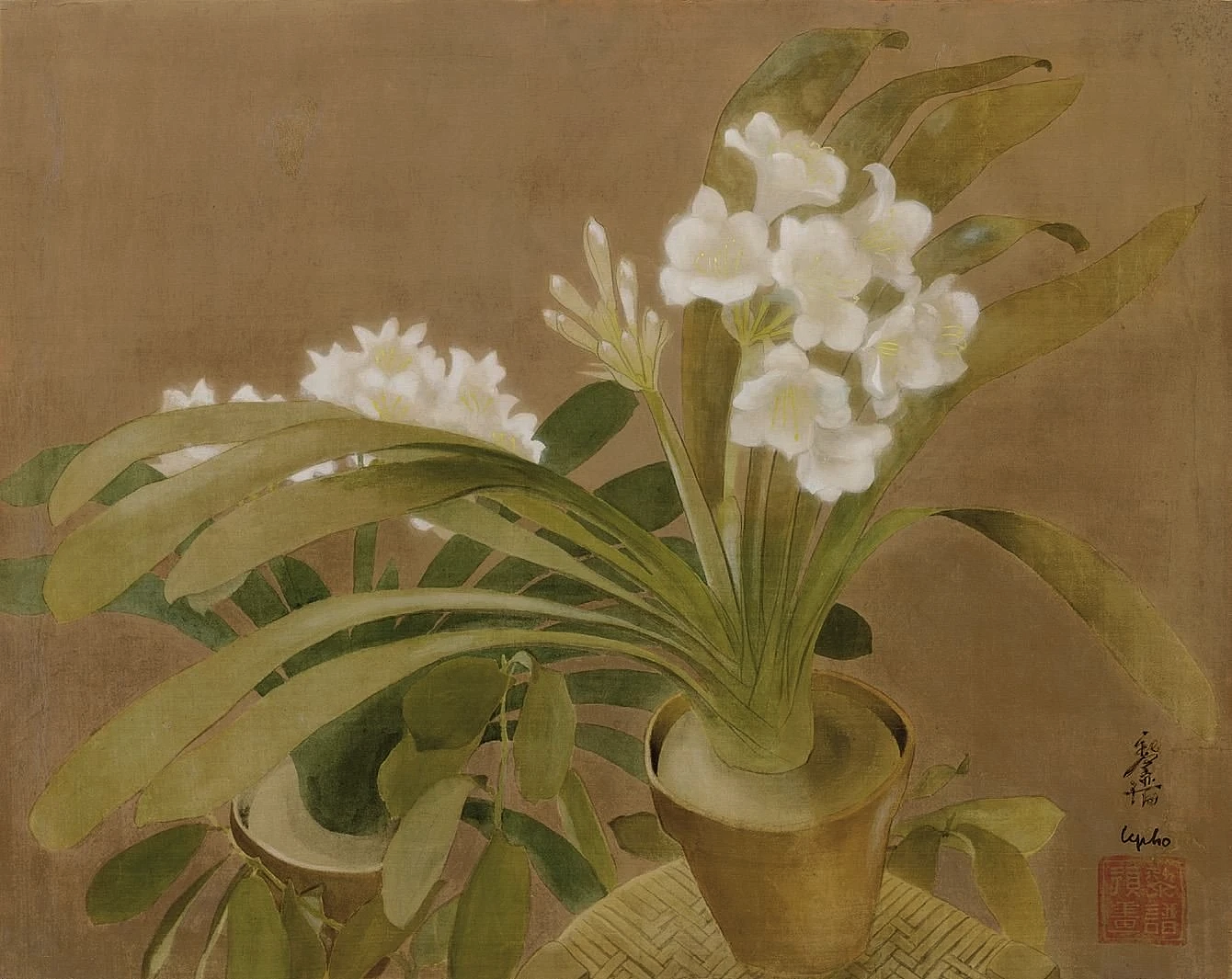
Le Pho (Vietnam, 1907-2001)
Amaryllis
signed in Chinese and English and stamped (lower right)
ink and gouache on silk
47 x 59 cm. (18 1/2 x 23 1/4 in.)
painted circa 1935
on seal of the artist
LE PHO - LES AMARYLLIS, 1934
A FLOWER IS ALSO A FLAG
"Les Amaryllis" is an extremely rare piece by Le Pho and is perhaps the most beautiful representation of flowers in his entire body of work. The stamp shows it was executed around 1934. In this particular painting, his name and signature also written in Chinese characters and were rendered with extreme care, thus hinting how significant this work was to Le Pho.
Comparatively, Le Pho gradually simplified both his stamp and signature in his later works. In contrast, Mai Thu kept dating his works in Chinese all his life. Few paintings of the subject matter reveal the fitness and rarity of early repertoire as exquisitely as the present work.
When Le Pho painted « Amaryllis », he had already established a fine reputation in the public eye: he had completed his education at the School of Fine Arts in Paris, his works had achieved recognition at the Colonial Exposition of Paris-Vincennes (1931), and he had travelled half the world, including Europe and China. By this time, his education and international exposure had perfected his technique and had stimulated his hunger for knowledge. A teaching post at the School of Fine Arts in Hanoi – a position of prestige at the time – was not enough to challenge Le Pho. The Occidental world, with Paris in the heart of it, hinted at a more invigorating artistic life.
Perhaps the circumstances in his life further influenced his decision to migrate. As an orphan raised by his aunt, the artist had no family responsibilities. Furthermore, the hand of the « most beautiful girl in Hanoi » had been refused to him by her father, as Le Pho, who had just returned from Europe, had not sent the signs of courtesy he expected for such a request. At the same time, the artist also understood that modern Vietnamese Art in the twentieth century could only be born from an active confrontation with Occidental Art. With nothing much to hold him back in Vietnam, Le Pho made his decision to move to Paris, where the artistic movements of the century were in full expression.
Amaryllis does not suggest an exile that would dominate his later works. It is a painting of freedom, created at the cusp between his creative and artistic deprivation and his hope and excitement about his future. For this painting, the artist refused to feature the common flowers of his native North Vietnam – roses, chrysanthemums, jasmine, violets, sunflowers, peonies, gladiola and lotus – instead, he chose the amaryllis whose petals are so white they are nearly brilliant and diaphanous. It is worth noting that white was the only colour that "the most beautiful girl in Hanoi" would wear.
The amaryllis flowers, known to symbolise radiant beauty, are depicted in two jardinières. They are set side by side, with one flower elevated on a pedestal with its lush foliage hiding the other from view. The stark, plain background and the simplicity of the objects – from the reed stool to the jardinière – place the work’s focal point on the floral composition. Perhaps the amaryllis on the ground, partially hidden from vision, indicate the past while those on the pedestal signify the future; one can’t bloom without the other.
As Le Pho left his past behind, he anticipated a hopeful future, a sentiment echoed by the immaculate petals of the newly-blossoming amaryllis. For one moment, they appear to embody life, beauty and radiance, yet all existence is ephemeral. However, as the painting alludes, the impending fall of one blossom may be succeeded by the bloom of another bud.
The painting, which Le Pho executed with great thought and precision, appeared to be one of the artist’s favourite works. He brought it with him when he came to settle permanently in France in 1937 and offered it to his close friend Vu Cao Dam as a wedding (with Renée Appriou) gift in 1938. The painting remained in the family between 1938 and 2006. Amaryllis’s lyricism resonates in the verses by The Lu (1907-1889), a poet who, like Le Pho, was born near Hanoi in 1907:
I am but a being of dreams – and that is all –
A being that dreams, alas!
Dawn is breaking in other realms
Only the land of my heart remains in darkness.
Le Pho painted flowers all his life. “Always freshly cut“, he told me, as if he was intoxicated by their scent.
His production would amplify during his Romanet and Findlay periods. By itself, the evolution of its representation of flowers deserves a later development, but we already note that beyond the style, different, which characterises each of the two periods, certain modifications are installed: the flowers are no longer in the ground but cut. The vase – Asian or European – which contains them is frontal and centred, their close environment (book, object …) provides information on the painter’s feelings. The choice of flowers, and their origin are also significant.
Yes, a flower can be a flag.
Jean-François Hubert

